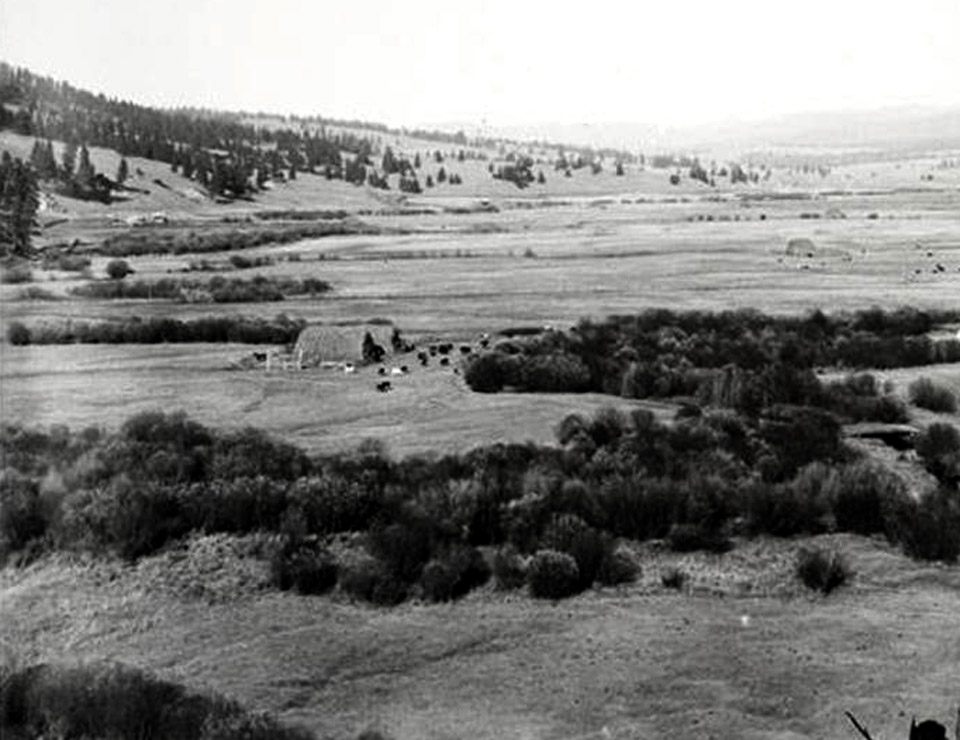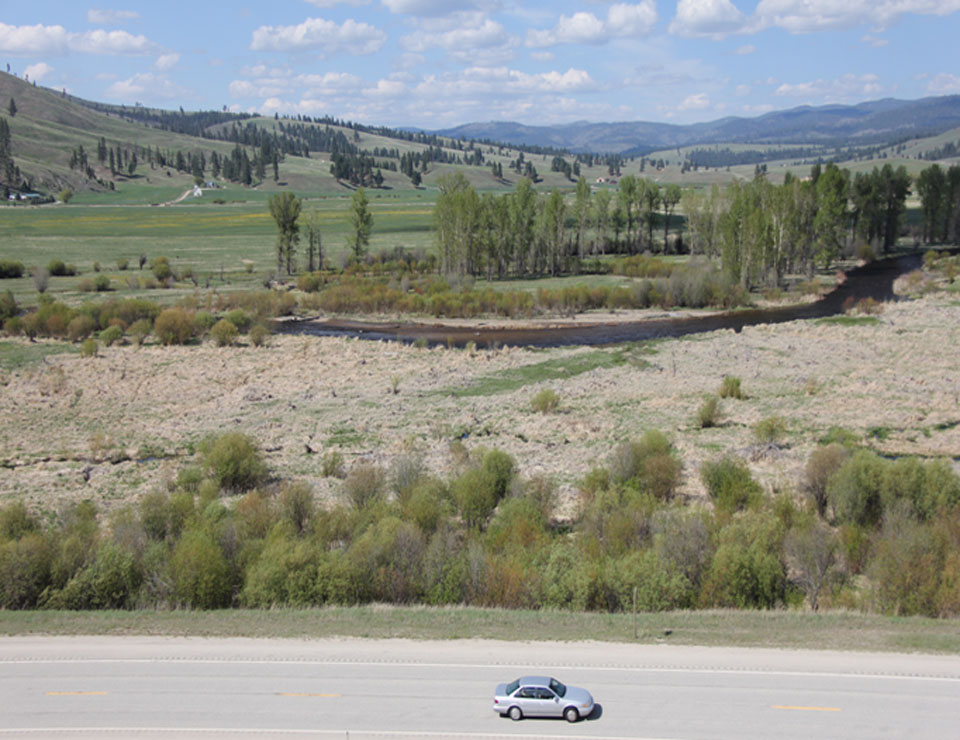Please click on link to see a series of photographs of a Ross’ Hole historic settler homestead.
Bison on the Continental Divide of the Bitterroot River
The members of the Lewis and Clark expedition first entered Ross’ Hole on the afternoon of September 4, 1805, after the Shoshone Old Toby had led them over a high pass from the Salmon River over onto a headwaters stream of the Bitterroot. Ordway’s journal states that they “proceeded on down this valley towards evening we arived at a large encampment of the flat head nation of Indians, about 40 lodges and I Suppose about 30 persons, and they have between 4 or 5 hundred horses now feeding in the plains at our view and they look like tollarable good horses the most of them…1
Ten months later, on July 5, 1806, part of the expedition under led by William Clark returned here. Similar to the year before, they used the traditional trail over the ridge to the north of Sula Peak that to avoided the canyon of the east Bitterroot River. Remarkably, that morning, before climbing east from the Bitterroot, their hunters shot a bighorn sheep, likely on the cliffs of the canyon just south of today’s Connor Montana. It seems that over the millennia, bighorn sheep had colonized many habitats where they were safe from spears and arrows, but were often extirpated when humans obtained guns. The next day the expedition followed the traditional Flathead trail over the continental divide (today’s Gibbon Pass) into the Big Hole. For the first time in nearly a year they saw signs of bison, and Clark noted that “I observe the appearance of old buffalow roads and some heads on this part of the mountain.” 2
Map and Footnotes
- Journals of Lewis and Clark for September 4, 1805 http://lewisandclarkjournals.unl.edu/read/?_xmlsrc=1805-09-04.xml&_xslsrc=LCstyles.xsl . It is interesting that Ordway refers to only 30 persons when most lodges held at least 7 people. Likely he was only referring to adult males. ↩
- Journals of Lewis and Clark for July, 1806 http://lewisandclarkjournals.unl.edu/read/?_xmlsrc=1805-09-05.xml&_xslsrc=LCstyles.xsl ↩

